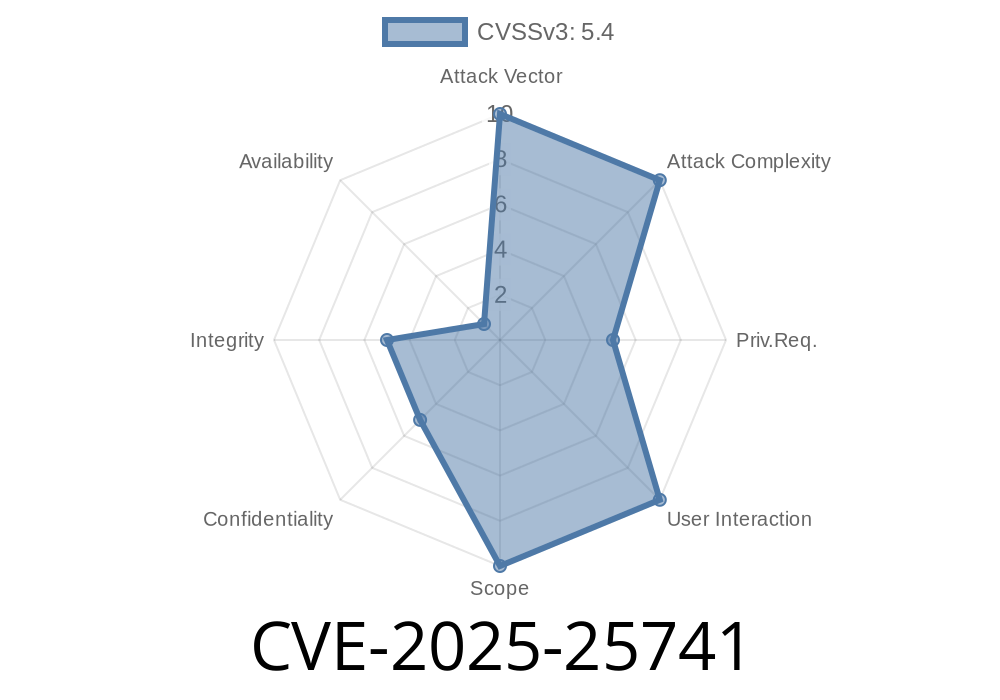Security researchers recently discovered a stack-based buffer overflow vulnerability affecting the D-Link DIR-853 A1 FW1.20B07 router. The vulnerability is present in the SetIPv6PppoeSettings module via the IPv6_PppoePassword parameter. In this lengthy post, we will discuss the exploit details, demonstrate a code snippet, and provide links to original references. This critical vulnerability could allow attackers to execute arbitrary code, potentially compromising the affected router and any connected devices.
Exploit Details
The vulnerability, tracked as CVE-2025-25741, was discovered during an investigation into the SetIPv6PppoeSettings module of the D-Link DIR-853 A1 FW1.20B07 router. By exploiting this vulnerability, an attacker can send a specifically crafted request to the affected device, leading to a stack-based buffer overflow.
This buffer overflow can allow the execution of arbitrary code on the affected device, providing an attacker with the ability to execute commands, tamper with settings, and potentially spread malware to devices connected to the network. This vulnerability poses a potentially serious risk to users, since many home and small-office networks rely on routers like the D-Link DIR-853 for internet connectivity.
Code Snippet
An attacker can exploit this vulnerability by sending a crafted HTTP request with an excessively long IPv6_PppoePassword parameter. The following code snippet demonstrates this:
import requests
TARGET = 'http://192.168..1';
EXPLOIT_PATH = '/goform/SetIPv6PppoeSettings'
SESSION_ID = 'your-session-id'
PAYLOAD = 'A' * 1024
data = {
'IPv6_PppoePassword': PAYLOAD,
# Other required fields...
}
headers = {
'Cookie': f'sessionCookie={SESSION_ID}'
}
response = requests.post(TARGET + EXPLOIT_PATH, data=data, headers=headers)
In this example, an attacker sends an HTTP POST request to the router's SetIPv6PppoeSettings module. The 'IPv6_PppoePassword' field contains the malicious payload that creates a buffer overflow. Note that a valid session ID is required to successfully execute this attack.
Original References
1. CVE-2025-25741 - main entry for the vulnerability.
2. D-Link Security Advisory - D-Link's official acknowledgement of the vulnerability and release of a security patch.
Mitigations and Solutions
1. Update to the latest firmware: D-Link has released a security patch for the affected router. Users should download the patch from the D-Link Support page and follow the provided instructions to update the device's firmware. Firmware version FW1.21B04 or later contains the security patch.
2. Password protection: Users should set strong, unique passwords for their router's administration console. This can help prevent unauthorized access to the device.
Conclusion
It is crucial for all users of the D-Link DIR-853 A1 FW1.20B07 router to be aware of the CVE-2025-25741 vulnerability and take immediate steps to mitigate any potential risks. It is essential to keep your router up-to-date with the latest firmware and maintain a strict password policy for the administration console. Doing so will help protect your network, devices, and information from potential attacks.
Timeline
Published on: 02/12/2025 18:15:28 UTC
Last modified on: 03/05/2025 19:15:38 UTC
